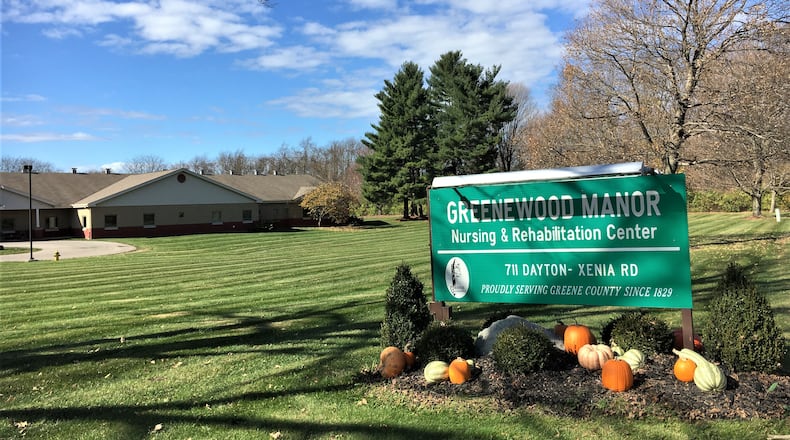The closure is a symptom of challenges of the industry, said Bob Applebaum, director of the Ohio Long-Term Care Research Project and a sociology and gerontology professor at Miami University.
“It’s a very difficult time to be in the nursing home business,” Applebaum said. “COVID made every problem that nursing homes had worse.”
Greene County commissioners decided to close Greenewood Manor, which is certified for 85 beds, because the population of the home was “too small for economical and efficient operation,” according to the resolution commissioners approved Thursday.
COVID-19 made this problem even more evident, Greene County Administrator Brandon Huddleson said. Greenewood Manor only started losing money after COVID hit, he said. The nursing home was down about $350,000 after a year.
“We are a victim of COVID,” Huddleson said.
Forty residents would have made Greenewood Manor self-sustaining, Huddleson said. Before the pandemic, about 50 residents lived in the nursing home.
Huddleson said this was a hard decision, but it had to be done because the county did not want to dip into its general fund to support the nursing home.
“It just became a necessary business decision,” Huddleson said. “It’s heartbreaking. For us, for the staff, for the families. It’s just heartbreaking.”
County commissioners pledged their support to help with an orderly transition. Huddleson said that means his staff are working to find new homes for all the residents and assisting Greenewood Manor employees find other jobs.
“We are a victim of COVID. This is no reflection at all on my staff. This is a problem for a lot of nursing homes,” Huddleson said.
The number of people living in nursing homes has dropped over the past 15 years, Applebaum said. In the 1990s, nursing homes statewide operated at 90% capacity. In 2017, they operated at about 80% capacity. Post-COVID-19 numbers show nursing homes in Ohio are 71% full.
“A lot of places are struggling,” Applebaum said.
Almost no new building of nursing homes is occurring, Applebaum said, but assisted living facilities are growing. Many people living in assisted living facilities today would have been in nursing homes 10 or 15 years ago, he said.
In the early 1990s, Ohio had about 10,000 licensed residential care beds, or beds in assisted living facilities. Today it has nearly 60,000, Applebaum said.
Applebaum said he didn’t believe Greenewood Manor’s 35 residents would have an issue getting into another nearby facility. Greene County has 11 other nursing homes, according to the state database, and several new assisted living facilities are planned in Beavercreek.
Nearly every county in Ohio had a county-run nursing home at one time. Greene County held on longer than most others, with Greenewood Manor marking 200 years this year. It is one of 16 county-run nursing homes left, Huddleson said.
The Butler County-run nursing home, the Care Facility, has also had issues since the pandemic hit. Butler County’s nursing home is experiencing a staffing shortage, which Applebaum said is a problem for many nursing homes. Through the years Butler County commissioners have had to bail the financially fragile nursing home out with general fund cash infusions, for a variety of reasons.
About the Author

